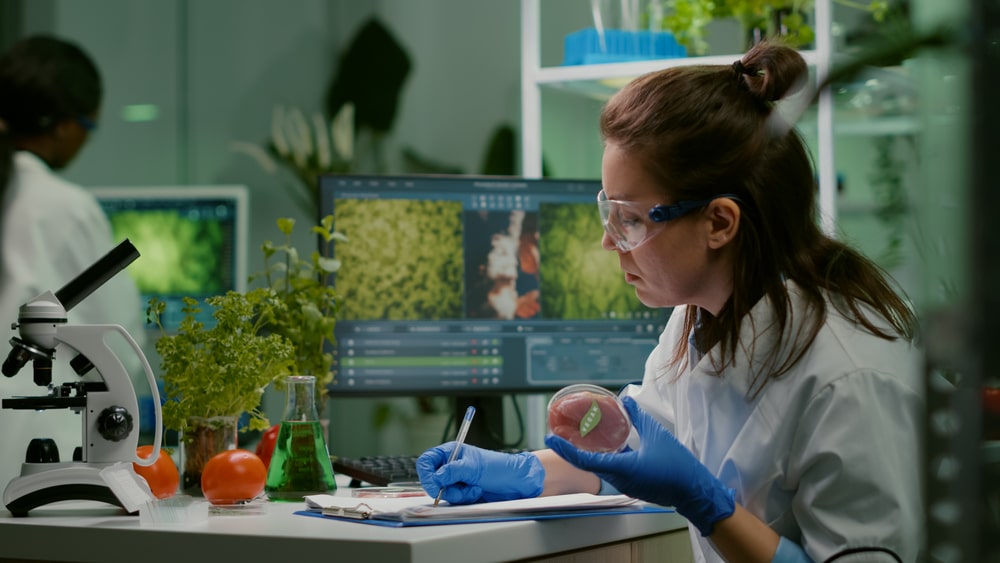Types of Cultures: Plant Growth and development occur in two different ways namely determinate growth where plant growth occurs with certain shapes and sizes like leaves, fruits, flowers, etc., and indeterminate growth where plant growth occurs in the roots and stem part which is proliferating continuously. Types of cultures depend on the type of explant used. Hence, plant tissue culture is broadly classified into eight types viz.
Types of Cultures:
- Seed Culture
- Embryo Culture
- Meristem Culture
- Bud Culture
- Callus Culture
- Cell Suspension Culture
- Anther Culture
- Protoplast Culture
- Hairy root culture
- Immobilized cell culture
Seed culture:
Table of Contents
Seeds are cultured in-vitro to generate seedlings or plants in aseptic conditions for raising the sterile seedling. The seed culture is done to get the different kinds of explants from aseptically grown plants that help in better maintenance of aseptic tissue (Fig.1).
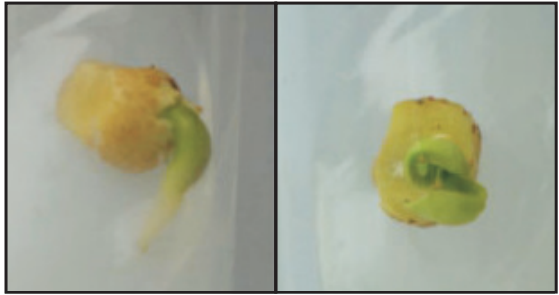
Importance of Seed Culture:
- Increasing efficiency of germination of seeds.
- It is possible to be independent of symbiotic germination.
- It is important in the production of Orchids.
Embryo culture:
Embryo culture is the sterile isolation and growth of an immature or mature embryo in-vitro for procurement of a viable plant. Embryo developed (initially white) from wide hybridization between two different species may not mature fully due to embryo endosperm incompatibility. The whole process is known as Embryogenesis (Fig.2).
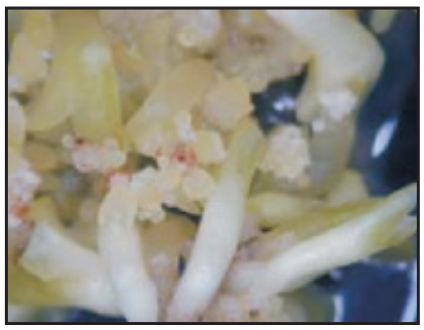
Importance of Embryo Culture:
- It is useful in the production of haploids.
- It helps in the prevention of seed dormancy.
- It helps in the shortening of the breeding cycle.
- It helps in the prevention of embryo abortion with early ripening stone fruits.
Meristem Culture:
It is the culture technique by which the apical meristem of shoots of angiosperms and gymnosperms are cultured to get the disease-free plants. Generally meristem tips, between 0.2-0.5 mm, most frequently produce virus-free plants and this method is referred to as meristem-tip culture (Fig.3). These explants are cultured on a medium containing cytokinin (plant hormone).
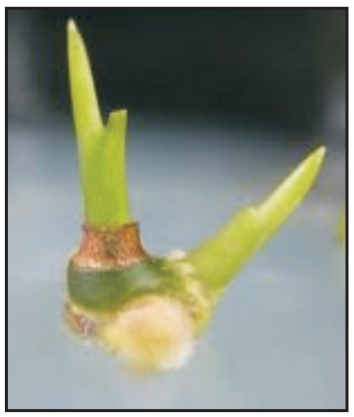
Importance of Meristem Culture:
- It helps in the production of virus-free plants.
- It helps in Germplasm conservation.
- It helps in the production of transgenic plants.
- It helps in rapid clonal multiplication.
- The method is successful in the case of herbaceous plants than woody plants.
- It helps in the culture of Potato, Banana, Cardamom, Sugar cane, sweet potato, etc.
Bud culture:
Buds contain active meristems in the leaf axils, which are capable of growing into a shoot. Each node of the stem is cut and allowed to grow on a nutrient media to develop the shoot tip from the axil which ultimately develops into a new plantlet. In the axillary bud method, where the axillary buds are isolated from the leaf axils and develop into shoot tips under little high cytokinin concentration (Fig.4).
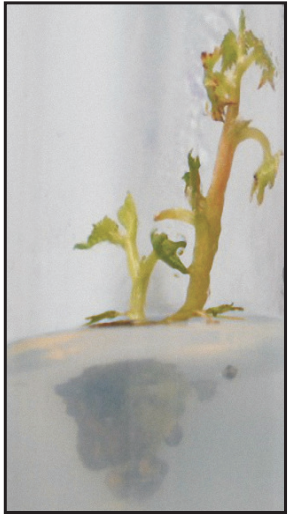
Importance of Bud Culture:
- Easy step for micropropagation.
- Easy method for production of disease-free plants.
- Isolation of phytoconstituents is easy.
Callus culture:
It is a culture of an undifferentiated mass of parenchyma cell produced from an explant of a seedling or other plant part in agar medium under aseptic condition is known as callus culture. A callus is densely aggregated, uncontrolled, undifferentiated, unorganized, aerated homogenous parenchymatous mass (Fig.5).
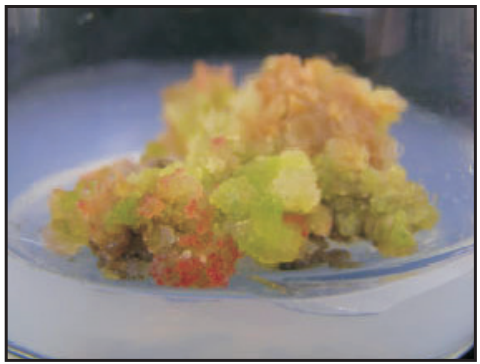
Importance of Callus Culture:
- It is the source of tissue for plant regeneration. The whole plant can be regenerated in large numbers from callus tissue through manipulation of the nutrient and plant hormones in the culture medium. This phenomenon is known as plant regeneration or organogenesis or morphogenesis.
- Chromosomal variation occurs genetically or epigenetically in the cells of callus tissue.
- The increased amount of secondary metabolites are obtained by extraction of the particular callus tissue.
- This method is the source of Tissue for Cell Suspension Culture.
- Several biochemical assays are performed from callus culture.
Cell Suspension Culture:
Suspension culture is defined as a uniform suspension of separate cells in a liquid medium where agar is not used. In this medium, callus fragments are transferred to a liquid medium and agitated continuously to keep the cell alive and separate. Agitation is also achieved by a rotary shaker attached within the BOD incubator at a rate of 50 to 160 rpm. This culture technique is used to study the morphological and biochemical changes during their growth and developmental phases.
Importance of Cell Suspension Culture:
- Suspension culture is consists of only single cells which are physiologically and biochemically uniform.
- This culture is capable of contributing significant information about cell physiology, biochemistry, metabolic events, etc.
- It is important for plant biotransformation and plant genetic engineering.
- No toxic products are formed with this culture technique.
- It helps for induction in somatic embryos and shoots.
- It helps in in-vitro mutagenesis and the selection of mutants.
- It helps in the production of secondary metabolites.
- Shorter duration and continuous process.
Anther Culture:
It is the in-vitro culture technique of anther containing microspores from unopened flower bud or immature pollen grains (Pollen culture) on a suitable nutrient medium under aseptic conditions for the development of haploid plantlets. By this culture technique haploid cells are obtained which is known as Androgenesis (Fig.6).
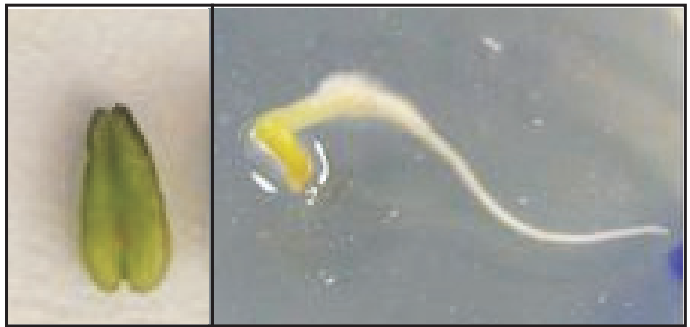
Importance of Anther Culture:
- It is used to study genetic recombination in higher plants.
- It is used to study the mode of differentiation from a single cell to whole organisms.
- It is used to study factors controlling pollen embryogenesis of higher plants.
- It is used for mutation studies.
- It is used for hybrid development.
- It is used for genome mapping.
- It is used for the formation of double haploids that are homozygous and fertile.
Protoplast Culture:
In this culture method, isolated protoplasts are cultured either in a liquid medium or semisolid agar medium in a thin layer or as small drops of nutrient medium in a sterile Petri dish. Protoplast cells are having a cell membrane without a cell wall (Fig.7). They are isolated either by the enzymatic method or by the mechanical method. Mechanical method is manual method and there is a possibility of a loss of protoplast cell due to friction force in motor and pestle. This method is avoided by following the technique likely a small piece of epidermis is selected from the explants then the cells are subjected to plasmolysis. This causes protoplasts shrinking and finally, the tissue is dissected to release the protoplasts from the cell wall. In the enzymatic method, enzymes such as cellulase, hemicellulase, and pectinase are used. At first, pectinase is used to breaks up the cell aggregates into individual cells by degrading middle lamella then these free cells are exposed to cellulase to release protoplasts from the cell wall. This enzymatic method is used widely to get more yields of protoplast cells as well as minimal or less damage to the protoplast cells.
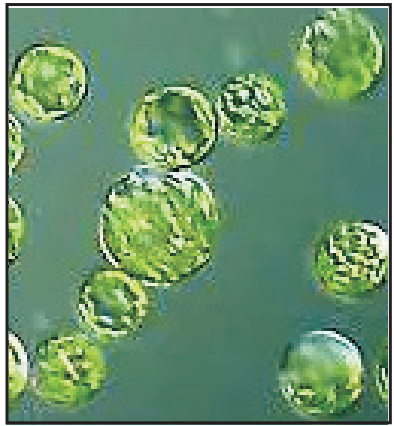
Importance of Protoplast Culture:
- This technique is used to study Morphogenesis.
- This technique is used to study Photosynthesis.
- It helps in gene transfer.
- It helps in the study of cell wall formation and its osmotic behavior.
- It helps in crop improvement through somatic hybridization.
- Protoplast cells also can regenerate whole plants.
- It develops novel hybrid plants through protoplast fusion.
Hairy Root Culture:
This technique is also known as transformed root culture. It is a culture produced after the infection of explants or cultures by a naturally occurring soil bacterium Agrobacterium rhizogenes that contains root-inducing plasmids (Ri plasmids) are infect plant roots and cause them to produce opines (food source for the bacterium) and abnormally very fast growth. It grows by increasing the rate of cell division and cell elongation. Hairy roots are induced in most of the dicot plants by genetic transformation (through T-DNA, transfer DNA) with A. rhizogenes. Hairy root culture shows a very high growth rate in the absence of the growth regulator and does not require conditioning of the medium (Fig.8).
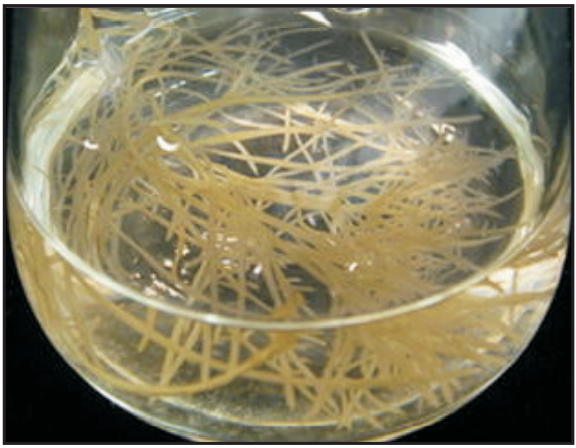
Importance of Hairy Root Culture:
- It helps in the production of high secondary metabolites.
- The culture grows under phytohormone-free conditions.
- The culture shows fast growth that reduces culture time and easy handling.
- It helps in the functional analysis of genes.
- It is also used for the regeneration of whole plants.
- The culture expresses foreign proteins.
- The culture is genetically and biosynthetically stable.
Immobilized Cell Culture:
It is the technique that confines the cells to a definite region in space, known as a matrix. During that condition, the catalytic activity of the cells retains and prevents their entry into the mobile phase. Immobilization is achieved by binding these cells onto or within solid support. Some of the important materials are used as matrix-like gelatin, polylysine, agarose, alginate, etc. The cells are immobilized by covalently, adsorbed, cross-linked, encapsulated, and entrapment methods (Fig.9).

Importance of Immobilized Cell Culture:
- The encapsulation method protects cells from mechanical damage in large fermenters.
- It is used in synthetic seed technology.
- It is used for the transfer of protoplast.
- It is cultured as a single cell for a longer period.
- It helps in the conservation of rare cells for further growth into the whole plant.
- It helps in the production of a higher amount of plant secondary metabolites.
- It helps in biotransformation.
Make sure you also check our other amazing Article on : Plant Hormones and Their Applications
